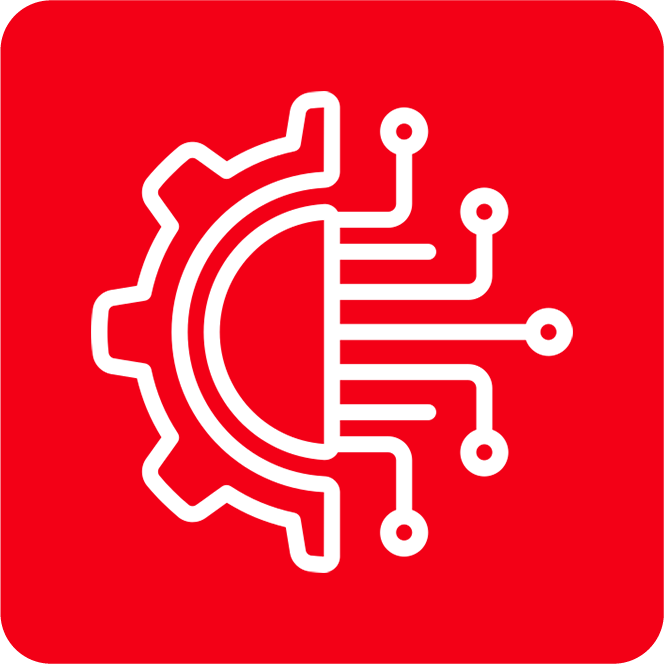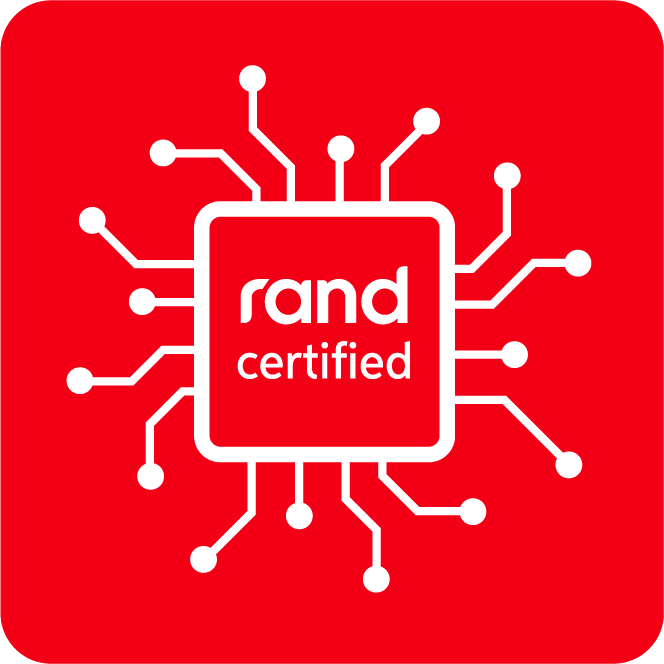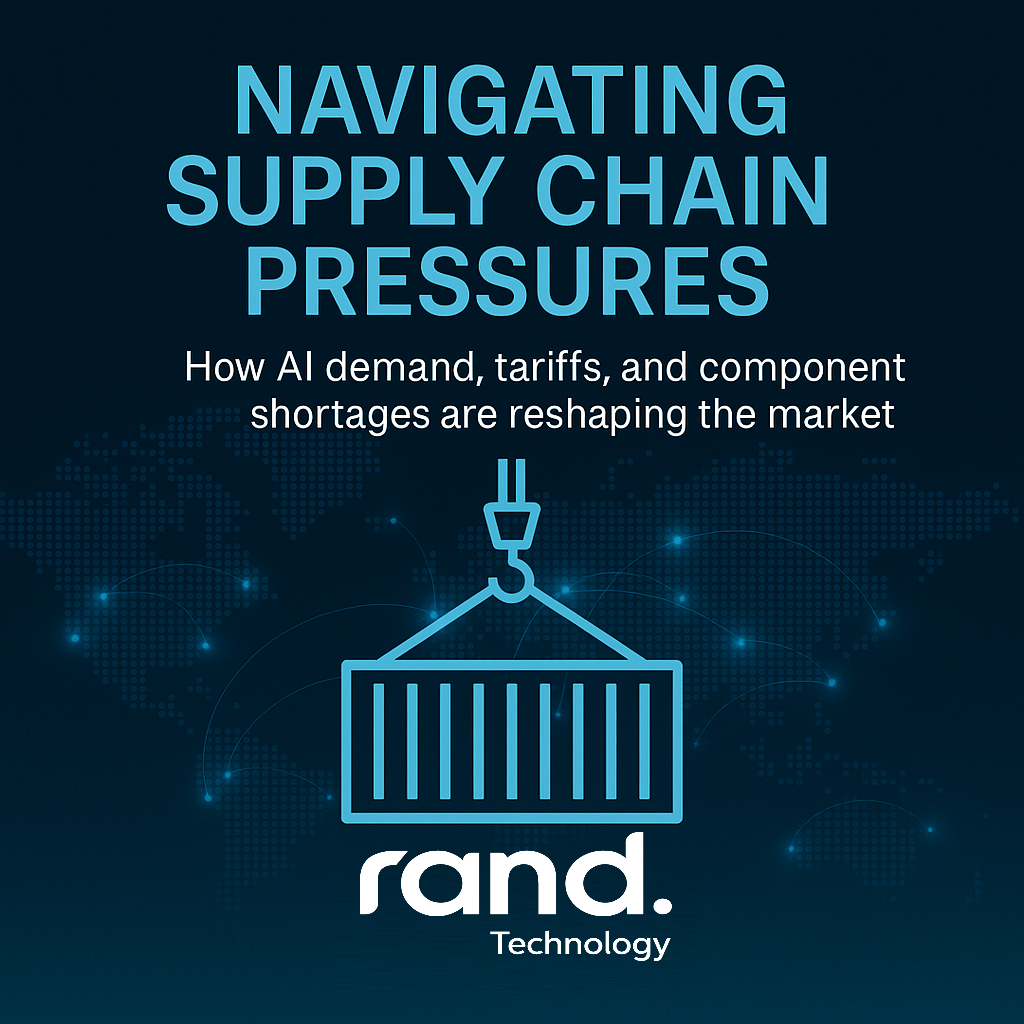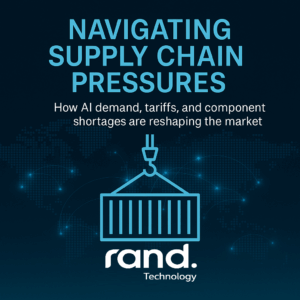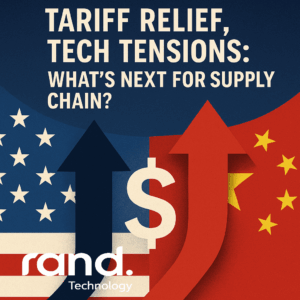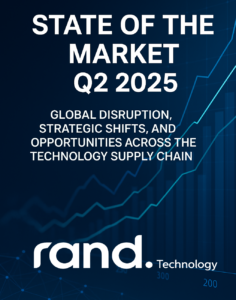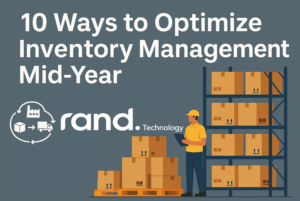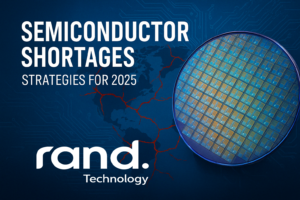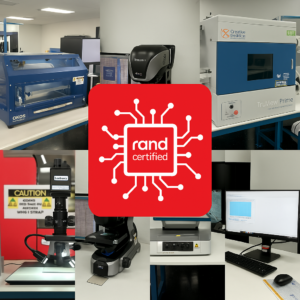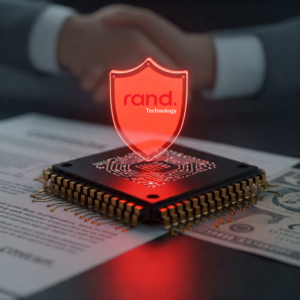How Rand Technology sees the intersection of runaway AI demand, memory shortages, and looming tariffs shaping the next wave of supply chain disruption.
The rapid rise of generative AI has reshaped performance expectations and infrastructure requirements across nearly every sector. As enterprises and governments rush to deploy LLMs and accelerate AI capabilities, the global electronics supply chain is once again under pressure. At Rand Technology, we are witnessing firsthand how AI’s insatiable appetite for high-performance hardware is driving new urgency—and new risk—through every layer of the component sourcing process.
The New Building Blocks of AI: Memory, Compute, and Storage
Three categories of components now sit at the epicenter of this surge: high-bandwidth memory (HBM), GPUs, and advanced SSDs. These are no longer niche parts—they are essential infrastructure, and demand for them is outpacing the supply chain’s ability to respond.
HBM3, the current standard in high-speed memory powering AI accelerators, is now facing lead times stretching from six to twelve months, with reports of even longer delays due to packaging constraints. Rand closely tracks capacity among key suppliers like SK Hynix, Samsung, and Micron. Procurement teams must now factor these delays into planning cycles or risk missed launches and production bottlenecks.
GPU availability tells a similar story. Even with capacity expansions, next-gen chips like Nvidia’s Blackwell series are already heavily allocated into 2025. Major hyperscalers dominate the pipeline, leaving limited flexibility for secondary buyers. The same ripple effect is hitting storage: enterprise-grade NVMe SSDs are experiencing 15-20% price increases YoY, driven by the bandwidth and durability demands of AI workloads.
Complex Packaging and Geographic Risk
Advanced packaging, especially technologies like TSMC’s CoWoS, has become a critical bottleneck. While front-end wafer production has scaled modestly, back-end integration processes have not kept pace. Capacity for CoWoS packaging is fully booked through at least late 2025.
Rand Technology’s global sourcing teams are also monitoring regional risk intensification. The concentration of packaging and test operations in Taiwan and South Korea raises continuity concerns in the face of geopolitical tensions and natural disasters. As seen during the April 2024 Taiwan earthquake, even brief production interruptions can ripple across quarters.
Policy Headwinds: Tariffs and Trade Realignment
Trade policy is another destabilizer. New U.S. semiconductor tariffs could raise prices by 10-30%, depending on component type and origin. But the real impact is in complexity. Many AI-critical parts cross borders 3-5 times before final delivery. Each step risks triggering separate duties and compliance headaches.
Our teams have already seen shipments delayed by up to six weeks as suppliers reconfigure logistics routes to avoid tariff exposure. Tariff buffers are being quietly priced into many Q3 and Q4 quotes.
“We’re working with customers now to scenario-plan tariff risk into every sourcing decision,” says Chief Operating Officer and President of Rand Technology, James Hill. “We’ve been in this business long enough to build deep, trusted relationships across every level of the supply chain, giving us the visibility and agility our customers need to stay ahead. We don’t just know our vendors—we know the entire supply chain. That’s the Rand difference.”
Overlaying supply constraints is a shifting trade environment. Proposed U.S. tariffs on semiconductors could raise component costs by 10-30% and introduce new layers of compliance complexity. For multinational supply chains, the risk is multiplicative: one GPU might touch five countries before final delivery, with tariffs assessed at each step.
“When sourcing spans fabrication in Korea, packaging in Taiwan, and assembly in Mexico, procurement becomes a geopolitical chess match,” says Hill. “That’s where Rand’s global presence and real-time market data give our partners an edge.”
Our sourcing teams have observed suppliers proactively adding tariff risk buffers into pricing, and some shipments are already being rerouted to reduce exposure. Uncertainty around how and when these tariffs will be enforced is adding further strain to planning cycles.
Strategic Shifts: From Reactive to Resilient
In this environment, reactive buying is no longer viable. Rand advises its customers to embrace multi-scenario planning, diversify supplier geographies, and consider forward buys on AI-critical SKUs. Multi-quarter procurement commitments are becoming a competitive necessity.
“2023 taught the industry hard lessons about overbuying and inventory gluts,” notes Kyle Miller, Director of North American Sales and Rand. “But in 2025, it’s not just about securing stock—it’s about securing relevance.”
Secondary and regional suppliers are becoming part of the strategic equation. While Nvidia and AMD dominate high-performance compute, other silicon providers in the EU, China, and India are offering viable alternatives for non-core workloads.
Rand’s global supplier relationships and compliance-verified sourcing processes position us to help customers navigate this complexity. Our teams in EMEA, APAC, and the Americas collaborate daily to identify sourcing workarounds and flag emerging bottlenecks before they become business disruptions.
Looking Ahead
The component market is undergoing a structural transformation. AI has changed the rules, and the path to resilience requires new strategies, partnerships, and planning rhythms.
Rand Technology remains committed to helping our customers thrive in this volatile era. We don’t just track the market—we help you stay ahead of it.
If you would like guidance on navigating AI-era component sourcing, contact your Rand account executive or contact us directly.



